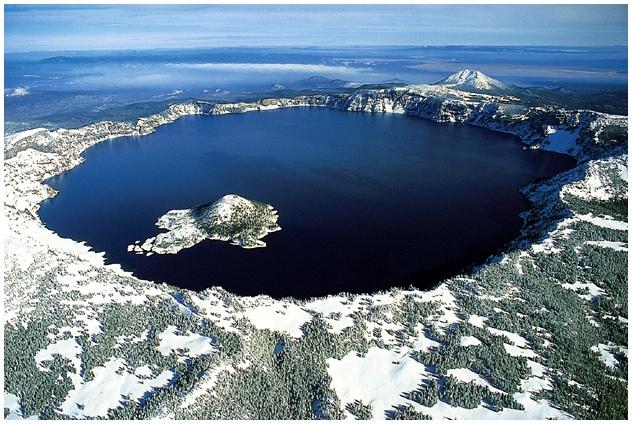[/caption]
A volcano caldera is a depression in the ground created by the collapse of land after a volcanic eruption. In some cases, the caldera is created slowly, when the ground sinks down after a magma chamber is emptied. In other situations, the magma explodes violently, and the caldera is the deep pit in the ground that remains after the volcano blows its top off.
A caldera forms when the magma chamber beneath a volcano is emptied in a large eruption. If the eruption happens quickly enough, the empty chamber beneath isn’t strong enough to support the weight of the volcano and it collapses down. This can happen in a single cataclysmic event, or over the course of several eruptions. Volcano calderas can be hundreds and even thousands of square kilometers in area.
There are many famous examples of volcano calderas. Crater Lake in Oregon was created when a volcano detonated around 10,000 years ago. Over time water filled up the nearly 597 meter deep caldera, making it the deepest lake in the United States, and the second deepest lake in North America (Great Slave Lake is the deepest). Another example of a volcanic caldera is the Yellowstone Caldera, which last erupted 640,000 years ago. It released 1,000 cubic kilometers of rock, covering much of North America in two meters of debris.
There are other examples of non-explosive volcano calderas. For example, the volcano Kilauea on the Big Island of Hawaii has a magma chamber that’s emptied by large lava flows, and not explosive eruptions. This causes the ground to collapse down after the lava eruptions, sinking many meters into the ground.
Volcano calderas have been seen on many other places in the Solar System. Although there aren’t active volcanoes on Mars today, regions of Mars were active billions of years ago, and there are many regions with large calderas. Jupiter’s moon Io is an example of a place with active calderas being created right now.
We have written many articles about volcanoes for Universe Today. Here’s an article about types of eruptions, and here’s an article about volcanic craters (not to be confused with calderas).
Want more resources on the Earth? Here’s a link to NASA’s Human Spaceflight page, and here’s NASA’s Visible Earth.
We have also recorded an episode of Astronomy Cast about Earth, as part of our tour through the Solar System – Episode 51: Earth.
References:
http://vulcan.wr.usgs.gov/Volcanoes/CraterLake/Locale/framework.html
http://volcanoes.usgs.gov/yvo/about/faq/faqhistory.php
http://hvo.wr.usgs.gov/gallery/kilauea/caldera/main.html

